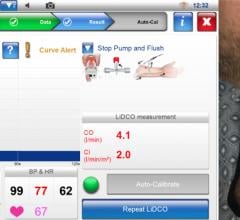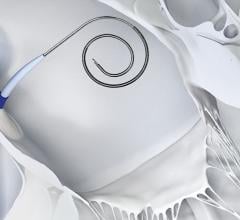
Sonja Holt, RN, BSN, CPACS administrator leverages the Integrated Cath Lab features of Horizon Cardiology to improve the overall workflow at Houston Northwest Medical Center.
After years as a bedside nurse in the intensive care unit (ICU) and later in the cardiac catheterization laboratory, I understand the workflow needs of taking care of patients as well as documenting the care they receive. Today, as the cardiovascular PACS administrator at Houston Northwest Medical Center, I also understand physicians and their need to save time and improve reimbursement.
At Houston Northwest Medical Center, our 400-bed facility had already made the decision to automate our cardiac cath lab, but the vendor system we originally chose was only utilized for storing images and providing a way for nurses to log the cases. Beyond that, we weren’t automated at all. The nursing staff still maintained a paper chart. Cardiologists still had to dictate their findings and await transcription, which delayed the report turnaround time (TAT) to referring physicians.
Once transcribed, the TAT for the posting of the finalized report in the medical record took up to 48 more hours. The report resided in one place – the patient’s electronic medical record (EMR). Surgeons had to come up to the cath lab to view images prior to surgery as the images were not available outside the cath lab. Additionally, two separate workflows were required for tracking charges – a paper trail and the manual entry of individual charges in a hospital information system. Additionally, we had to use manual processes to log and track statistics for compliance, quality control, regulatory boards, etc.
We knew there had to be a better way to improve our department efficiency and overall patient care. We found it with the integrated cath lab (ICL) system of McKesson’s Horizon Cardiology cardiovascular information solution (CVIS). Since implementing the single-system solution that connects, in real time, all stages of the hospital’s cardiovascular workflow, we have saved physicians, patients and the hospital time and money. Most importantly, the ability to provide instantaneous access to results to multiple information systems has drastically improved patient care in the cardiology suite and overall length of stay in the hospital.
The Challenge
The information for a cardiac patient is gathered from multiple points — the holding area, the cath lab and the recovery room. Our previous system did not assimilate the disparate data and integrate the information into a physician report. Aside from a verbal nursing report, continuity-of-care was dependent on a manually printed nursing report. Additionally, during the recovery phase, the nurse would have to manually input documentation such as the patient’s post-cath vitals and other essential data rather than having a recovery system which would collect that data from a vital sign monitor and from configured templates. This took valuable time away from patient care, increased post-cath recovery time and delayed the patient’s discharge.
Our cardiologists, who conduct approximately 2,400 diagnostic and interventional cardiac caths and more than 6,000 echocardiograms each year, were also forced to log in and out of different systems to locate what they needed and could not view images and complete reports simultaneously outside of the department.
The hospital was losing money due to inefficient manual processes, which required manual individual charge entry on a separate information system while paper charting served to track inventory usage, ordering and replacement. These laborious processes created havoc in tracking and billing device usage accurately for procedures. Our staff was spending about 5-10 minutes per case and up to an hour per day entering charges for cath procedures. Charges were missed and duplicate inventory ordering ultimately decreased the hospital revenue.
The Answer
Our department along with physicians and IT staff looked at multiple information systems related to cardiology before choosing Horizon Cardiology from McKesson in 2007. The system stood out for several reasons.
With a single click of the mouse, report results of cath procedures (both physician and nursing) are exported electronically to the nursing information system and the physician information system, as well as the electronic medical record. Additionally, the physician reports are automatically faxed to designated physician offices and, as necessary, other departments within the hospital. This automation has enabled referring and attending physicians to work more closely in developing a patient-specific plan of care, minimize hospital length of stay, as well as enabling nursing and ancillary staff collaboration.
Second, the system stores all images, waveforms and data in a single database so that clinicians have the entire clinical data at their fingertips. We no longer have to pull data from different systems. Once the information is entered in hemo, it is instantly available to any workstation. Furthermore, online reporting gives cardiologists remote access so they can report from their home or office.
Third, McKesson’s ICL is robust for clinical charting. Everything documented in the holding area and in the hemodynamic nursing system is assimilated into the physician report. Having the report 80-90 percent complete before the physician starts to finalize their report has enabled us to achieve extensive physician compliance in structured reporting.
Finally, the single database ensures easy and accurate charging processes. It also provides enhanced inventory tracking, including inventory usage, re-ordering and maintaining stock. In addition, it provides consolidated data for administrative reports while controlling regulated patient information, which is essential to the practice of modern day medicine and essential to optimal reimbursement.
Our new streamlined workflow and online reporting has transformed our cardiology department. Now when an order is entered into the hospital information system (HIS), the demographic patient information is sent electronically to Horizon Cardiology. The staff performs the procedure, entering all clinical information before, during and after the case. The cardiologist completes and electronically signs the report, which is immediately available to all members of the patient’s medical care, and images are available for the surgeon in the OR as well as remotely. The charges are completed with efficiency and administrative reports are run with great accuracy.
The Results
Implementing an integrated cardiovascular workflow has saved time across the board. We’ve reduced report TAT down from four or five days to the same day, and recovery room TAT has been accelerated by 30 minutes. Additionally, we’ve reduced the time it takes to complete cath charges from 30-60 minutes to five minutes daily.
Improving the charge capture process and inventory usage accuracy also significantly increased our revenue annually because we are now capturing charges that we had previously missed, replacing only the items used and avoiding ordering and billing duplication.
Finally, and most importantly, we’ve improved our patient care. Patients now benefit from their care providers having the complete cardiac record available; thus spending more time with the patient, instead of searching for missing or delayed records.
The ICL system in Horizon Cardiology has proven invaluable in enhancing our nurses’ ability to care for patients, allowing physicians to report accurately and completely on a case while maintaining the integrity of the hospital in terms of compliance and regulatory standards.
This case study was supplied by McKesson.



 November 14, 2023
November 14, 2023 





